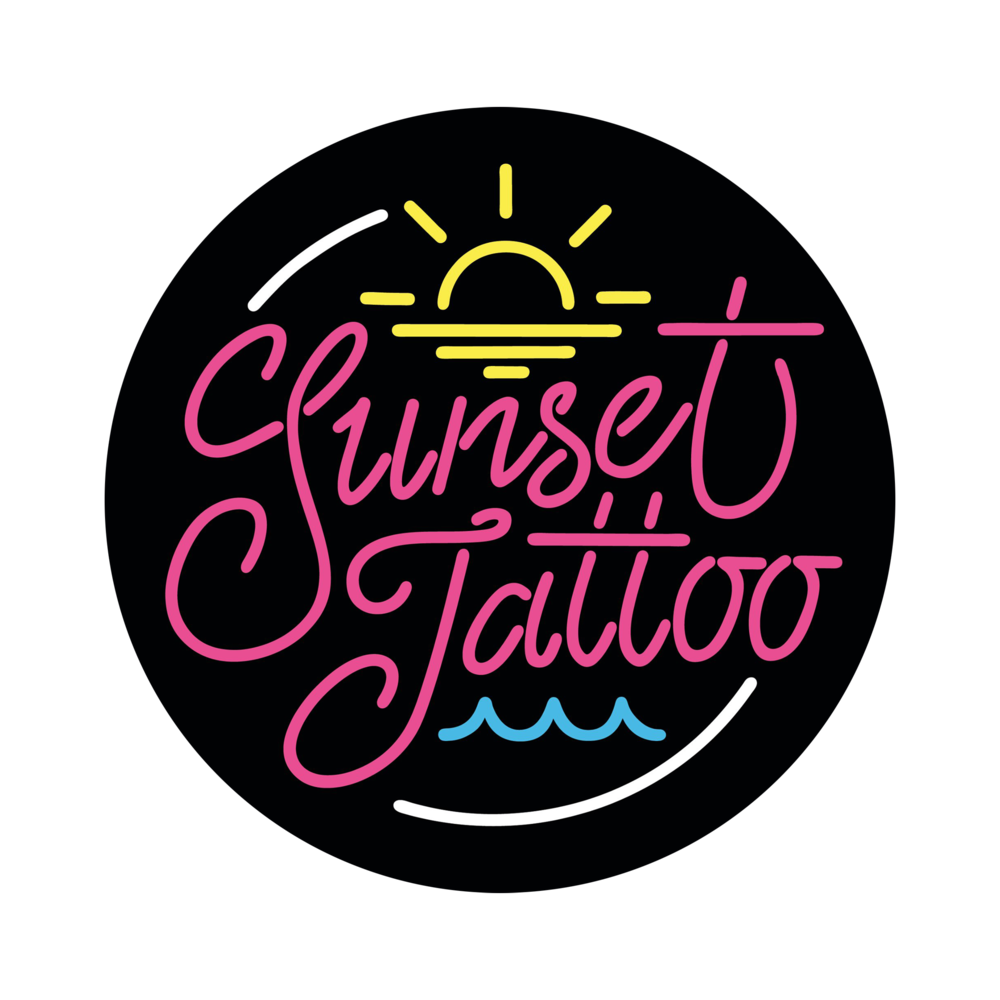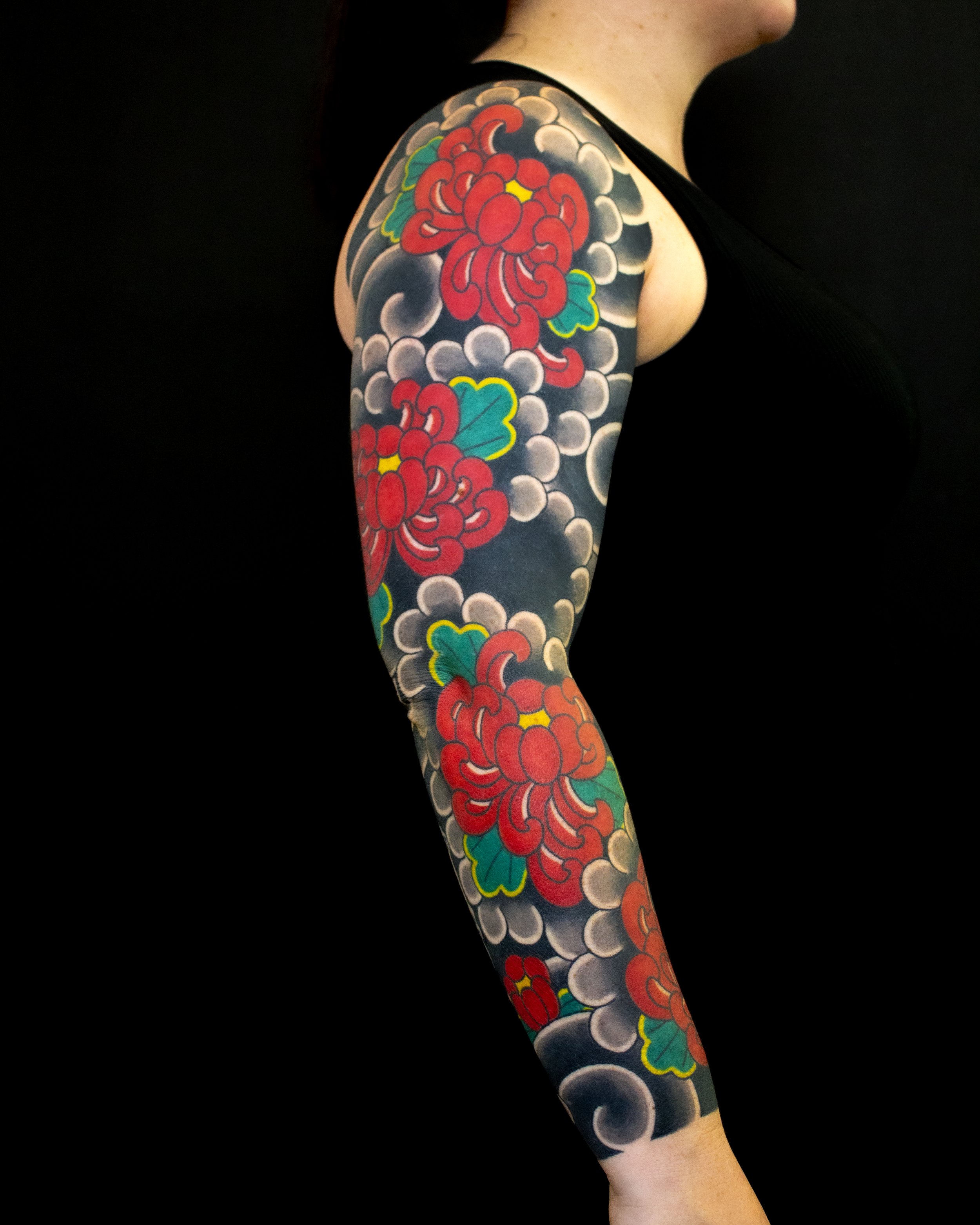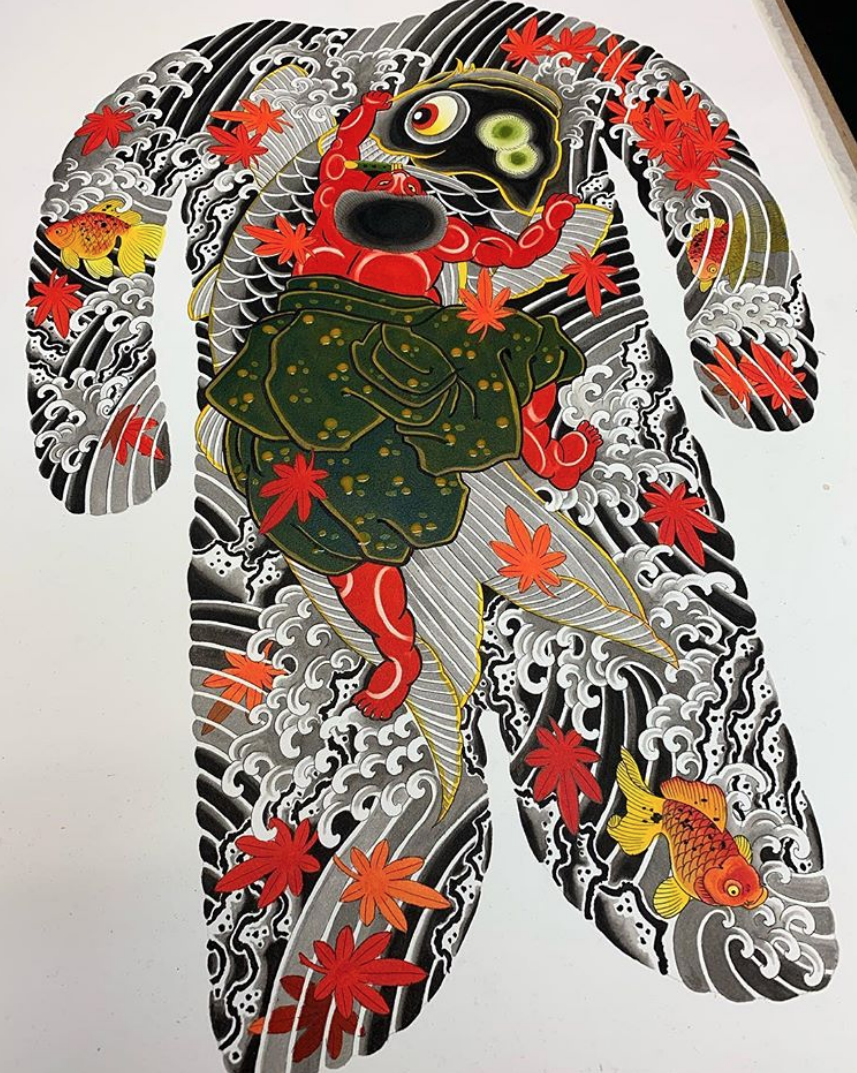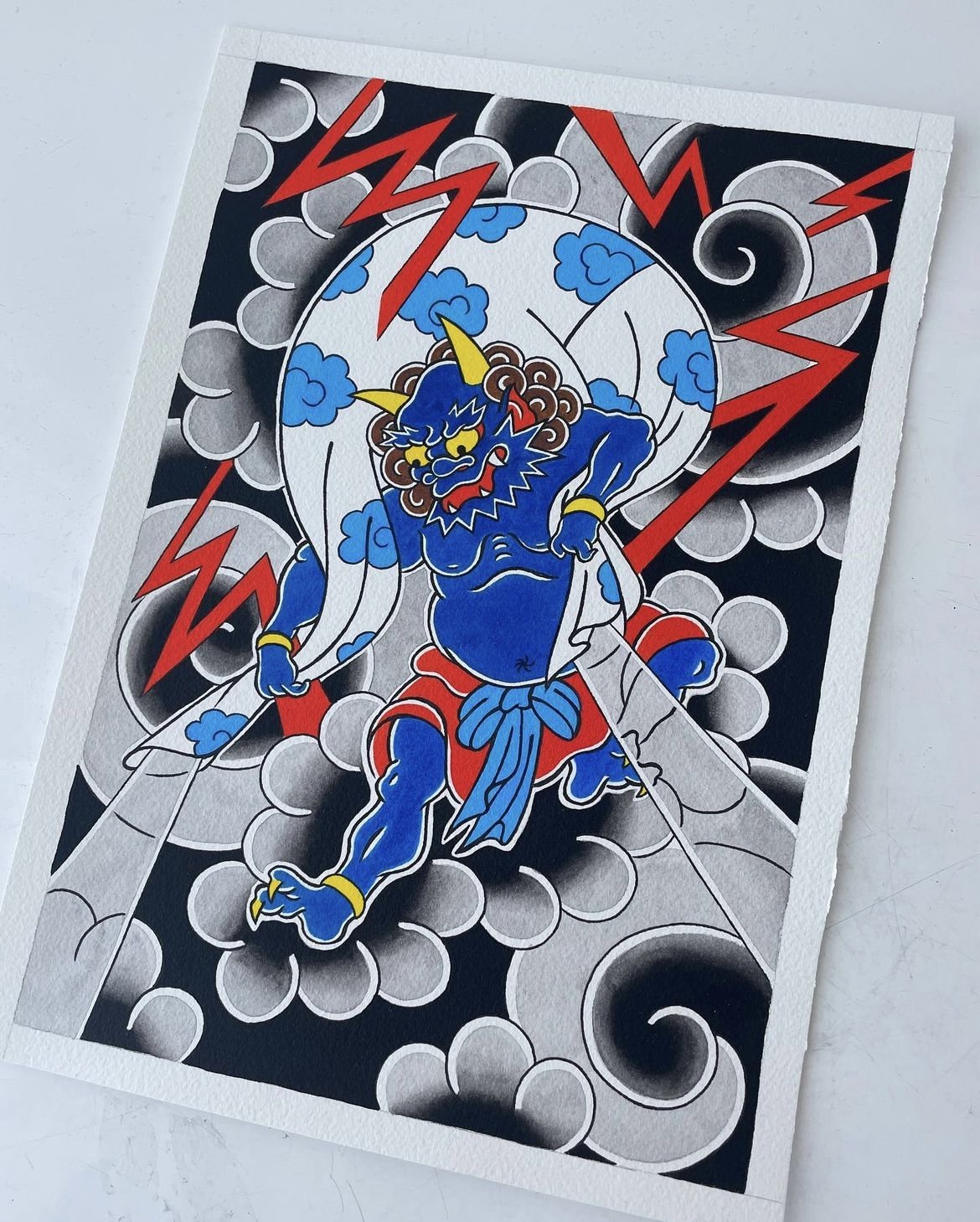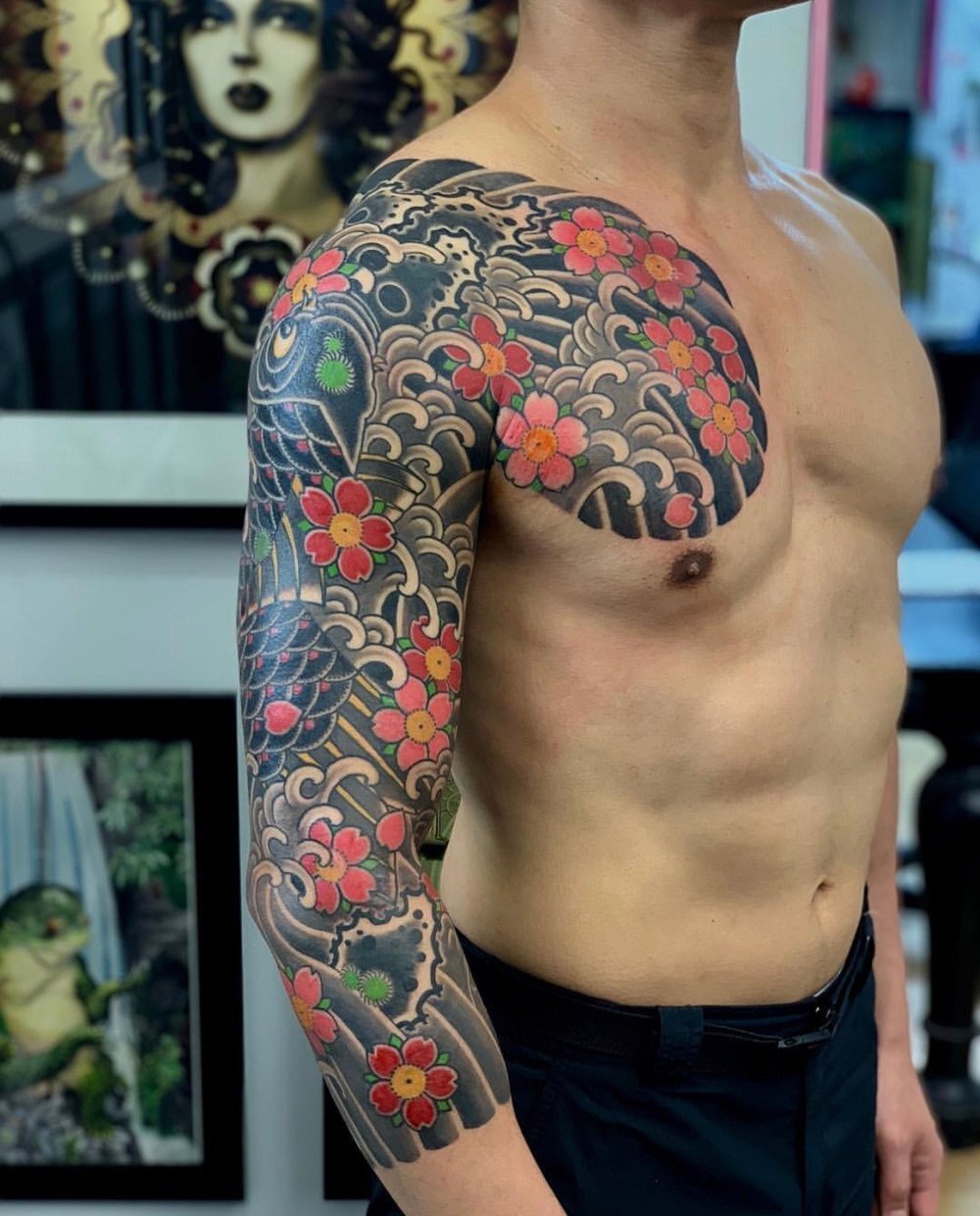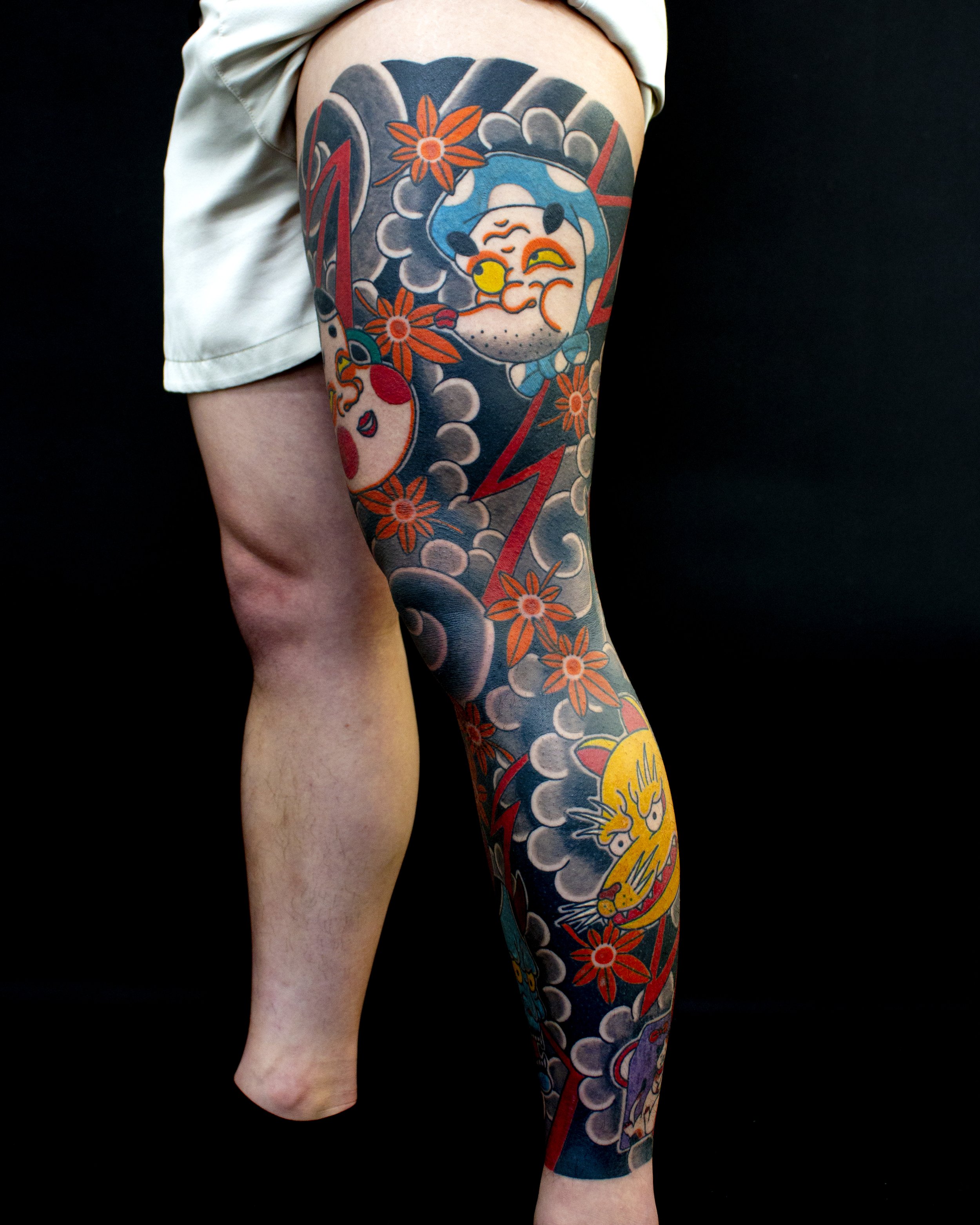Irezumi
Sunset Tattoo is proud to be the official home of Japanese Tattooing (known in Japan as "Irezumi") based in central Auckland, New Zealand. We have a stellar line up of specialist artists who have made this time honoured style not only their profession, but also their obsession. Between them they cover an array of tastes and takes on what is widely considered to be the most sophisticated and difficult to master of the tattoo styles.
Horiyama is originally from Hiroshima, Japan and apprenticed at Sunset Tattoo. Horiyama honours the tradition of her homeland with her eye catching bright, bold and refined tattoos. Japanese tattoos from Horiyama are both playful and timeless, and are designed to last a lifetime. She has been tattooing for over 7 years and is highly experienced in large scale Japanese Irezumi.
TomTom founded Sunset Tattoo in 2014 after 15 years of studying tattooing in New Zealand and around the world. Now concentrating on his own style of Japanese tattooing and Irezumi inspired custom tattooing, and travels regularly to Japan to study the art form. He finds that the timelessness and dark beauty of the Japanese traditional approach to tattooing means he can ensure that his clients will have a truly elegant and strong tattoo that will hold up technically and stylistically for life. He loves doing both large scale work and smaller “one shot” pieces
Japanese tattoo masters have long been celebrated around the world for being world leaders in tattooing. The practice of tattooing in Japan goes back centuries, and Irezumi is made to be lasting, strong and timeless. Traditional subject matter, combined with background convey a sense of movement and action, often depicting a story or scene. Through working with an artist who specialises in Japanese tattooing, you can obtain a beautiful piece unique to you using tried and true Japanese technique, methods and symbolism.
Below is some helpful information around how a Japanese tattoo is made, which can be used as guidance when deciding on your own personal tattoo.
Gakubori - Background
Gakubori compliments the main theme by expressing the world around it. This is achieved by adding background such as clouds, waves and flowers. It has the same effect of making the main theme stand out in the same way as framing a painting. Gakubori has specific shapes, elements and formula which is dependant on its main subject matter.
With Gakubori, one must consider the environment and season appropriate to the subject matter. Many subject matters have specific flower pairings (see ‘subject matter’ section for popular subject matters and pairings).
Gukubori is always black and grey. This is because it helps the bold colours of the background stand out. The black and grey background works as a foundation that holds the tattoo together, forever, If a client chooses to get a piece that is entirely black and grey, a strong contrast between the background and foreground is needed. This can be done using negative skin space or large sections of dark grey/black with skin space.
Composition
The human body is a canvas to plan a story: considering the body in its vertical development, it should always be taken into consideration, the rule according to which there should be earth from the feet up, water in the middle, then air. The mentioned rule is flexible, of course, for instance, the main design (back) is a water subject. In this case the whole body could be dedicated to this element.
Traditionally, the main subject matter is placed on the back and the arms and legs are the ornamental subject matters.
Where ever you may start from, the ultimate goal is to join tattooed sections of the body together into a whole (bodysuit) and it is very important to keep these features consistent. Although this is the end goal that is encouraged, obviously we welcome people who are wanting to start with smaller tattoos such as sleeves.
Below are some names and different styles of tattooed sections of the body.
Back
Nukibori - main subject matter on back with no background
Kamenokogakubori (turtle shell) - subject and background occupy only the back, including the whole buttocks, leaving the rest of the body blank
Sousinbori - Full body tattoo. Filling the entire boy with the exception of the hands, feet, head, neck and genital area.
Arm sleeves
Gaku from the arm must be from the chest stopping just below the elbow (1/2 Go-bu), Below the elbow (3/4 Shichi-bu, Hati-Bu) or all the way to the first (full Nagasode)
Kantobori - sleeves with chest plate, used around Tokyo covered only partially the chest leaving the lower pectoral and nipple blank.
Kansabori - sleeves with chest plate used around Osaka, covered completely the pectoral, nipple included.
The most common design for the arm tattoo reaches the half forearm (often called 3/4 sleeve). This was common as tattoos can be hidden even wearing a kimono with wide sleeves) It is important to bear in mind that traditionally, not flaunting ones tattoos is fundamental; they are only displayed only on extremely rare occasions.
Front
Munewari - this features a gap of untattooed skin roughly one firsts width positioned vertically in the middle.
Donburi - fills the whole area of the front.
Legs
The leg from in case of Munewari can be straight down on the thigh and drawn in an arc to connect with the bottom of Sewari, or it can be tattooed up to just above the knee (Han-zubon) or tattooed under the knee (Hati-bu) or tattooed just above the ankle (Naga-Zudon).
Subject Matters
Japanese tattoos often showcase the culture’s great respect for nature. Ukiyo-e prints of landscape, animals, figures and portraits frequently feature in traditional tattoos. Some favourite motifs in are scenes representing adventures of brave warriors and heroes as well as religious figures (shinto Gods).
Lucky animals are popular subject matters, including those of the traditional folklore such as dragons, phoenix koi carp and magic foxes. A number of sinister and scary designs are also common such as ghosts, spirits, decollated heads and demon masks but these are often designed to ward off evil spirits.
Goldfish - Utagawa Kuniyoshi
Popular subject matters and pairings
Koi -paired with water, Sakura (Cherry Blossom) or Momiji (red maple leaves)
Theater Masks (Hyottoko, oni, hannya, noh, tengu)
7 Gods (Ebisu, Daikokuten, Benzaithen, Bishamonten, Jurojin, Fukurokuju, Hotei)
Dragon (Ryu) - can be paired with water or cloud and with Kiku (Chrysanthemum)
Tiger (paired with Bamboo or Sakura)
Fu Dog also known at Karashishi or Shishi (paired with Botan/Peony)-Often paired with rocks.
Kirin (japanese unicorn)
Kingyo (goldfish)
Samurai (Tomoe Gozen, Miyamoto Musashi and so on) most great tattoos of Samurai and warriors are from specific stories, real life characters, or tales. They often carry their own meaning and stories.
FuduMyoo - often only used on the back as this is a very detailed subject matter
Phoenix (Hou-ou)
Birds such as cranes or suzume (sparrows)
Snake (Hebi) - paired with most flowers
Kin taro & momotaro (japanese folklore heros)
Baku (dream eating elephant)
Yokai Creatures and Ghosts
Getting a Japanese Tattoo
The best way to approach getting a Japanese tattoo is to research the style further, and gather together images that you really love. Decide on size and placement, and have an idea of your preferred subject matter. From here you can contact us by email at info@sunsettattoo.co.nz, and we can book you in for a consultation with your preferred artist. Our artists can help you come up with a final decision on a design, and help with any other questions you may have. It's best to make sure you love the style of the artist you have chosen, so that once a subject, size, and placement is agreed on, you can sit back, relax, and allow your artist to take care of the design and application of the tattoo.
